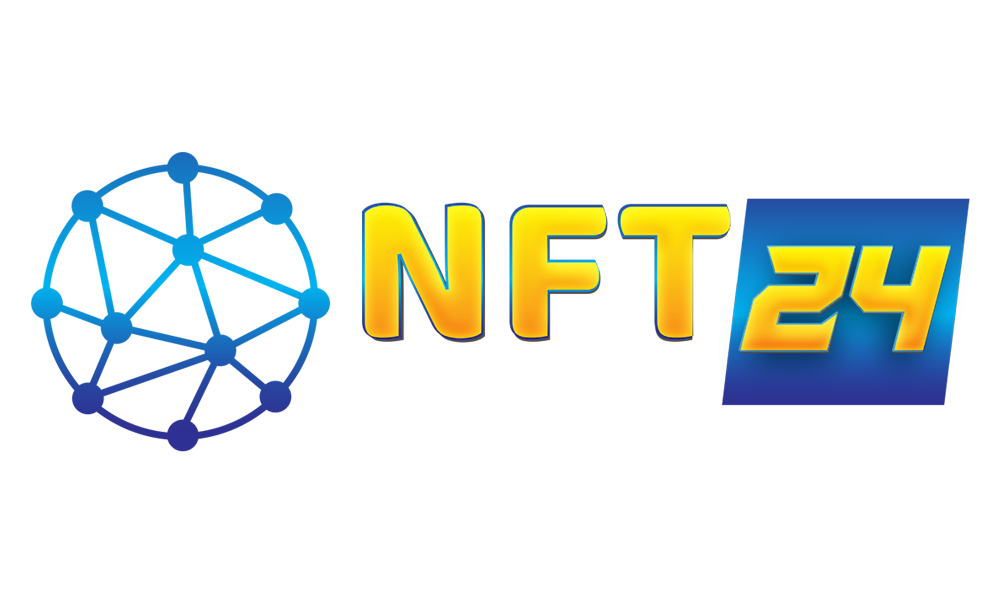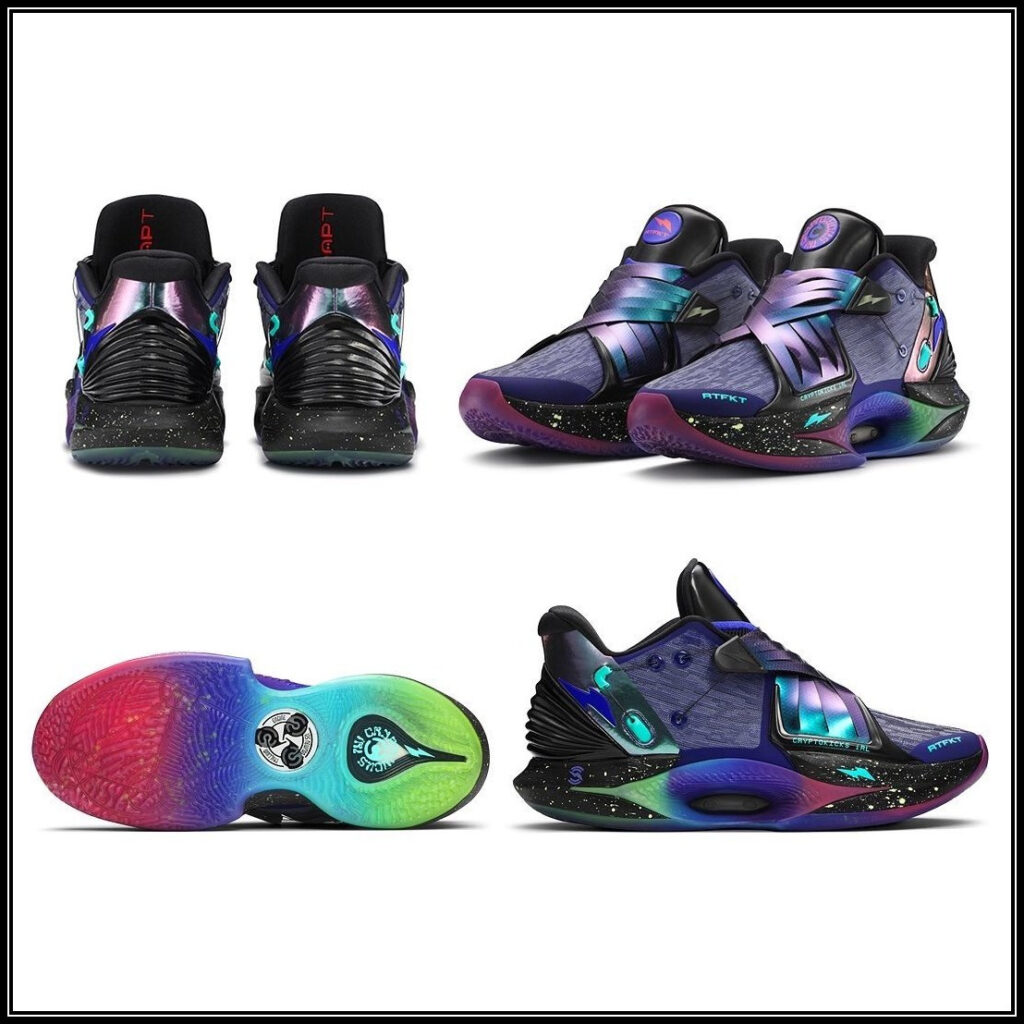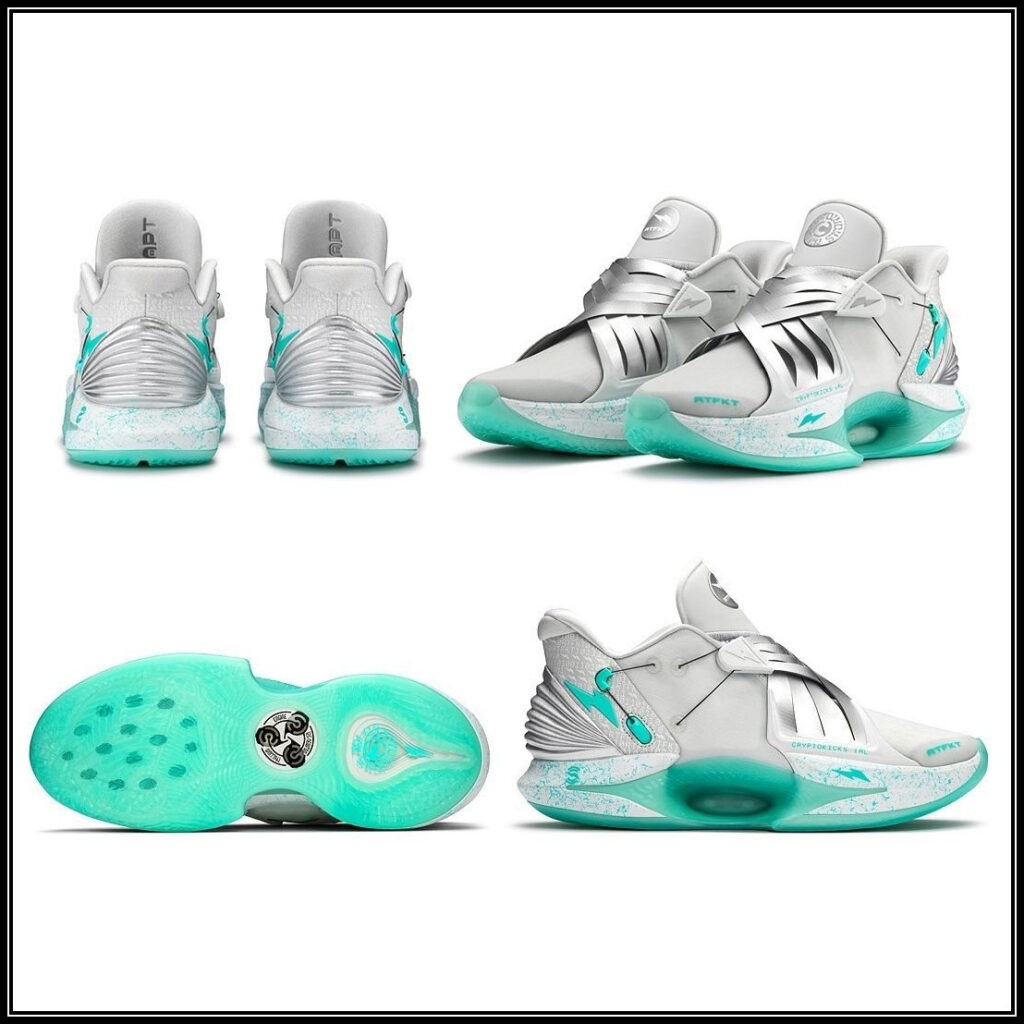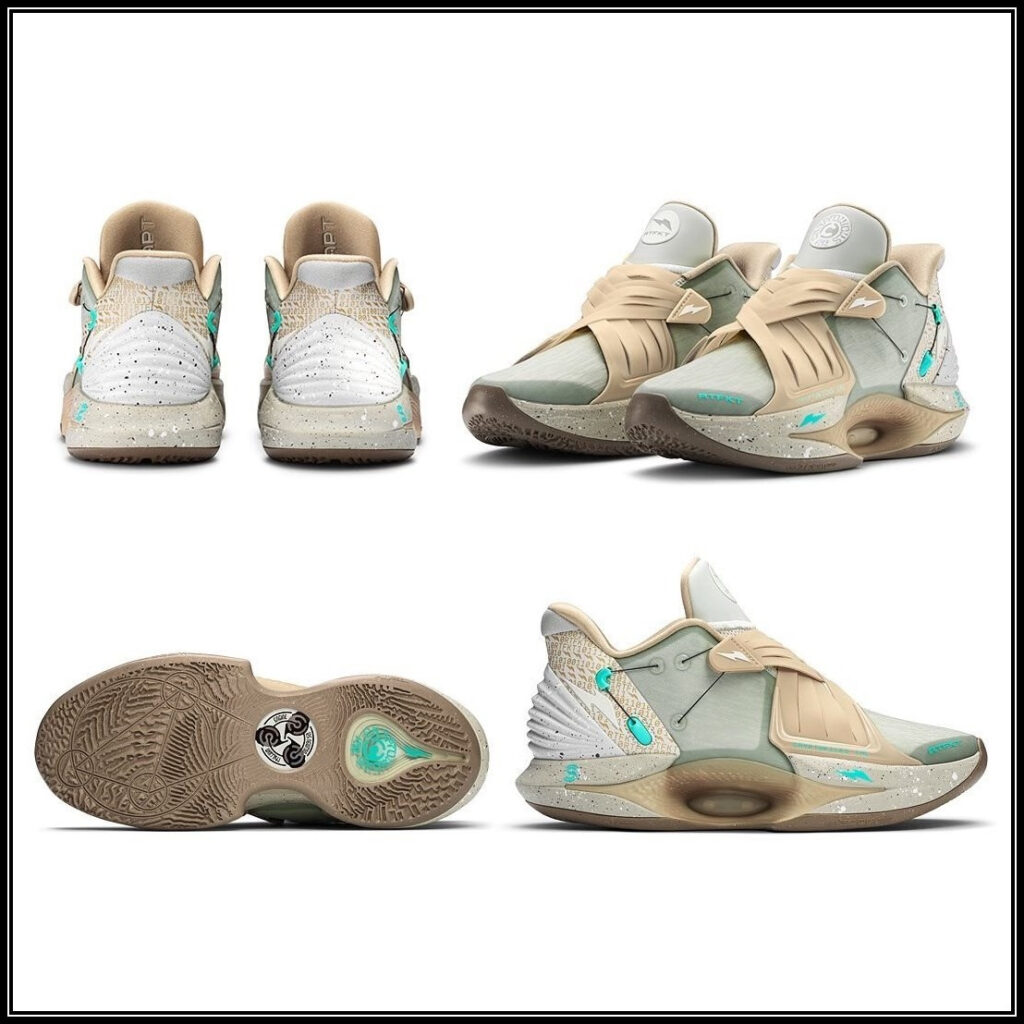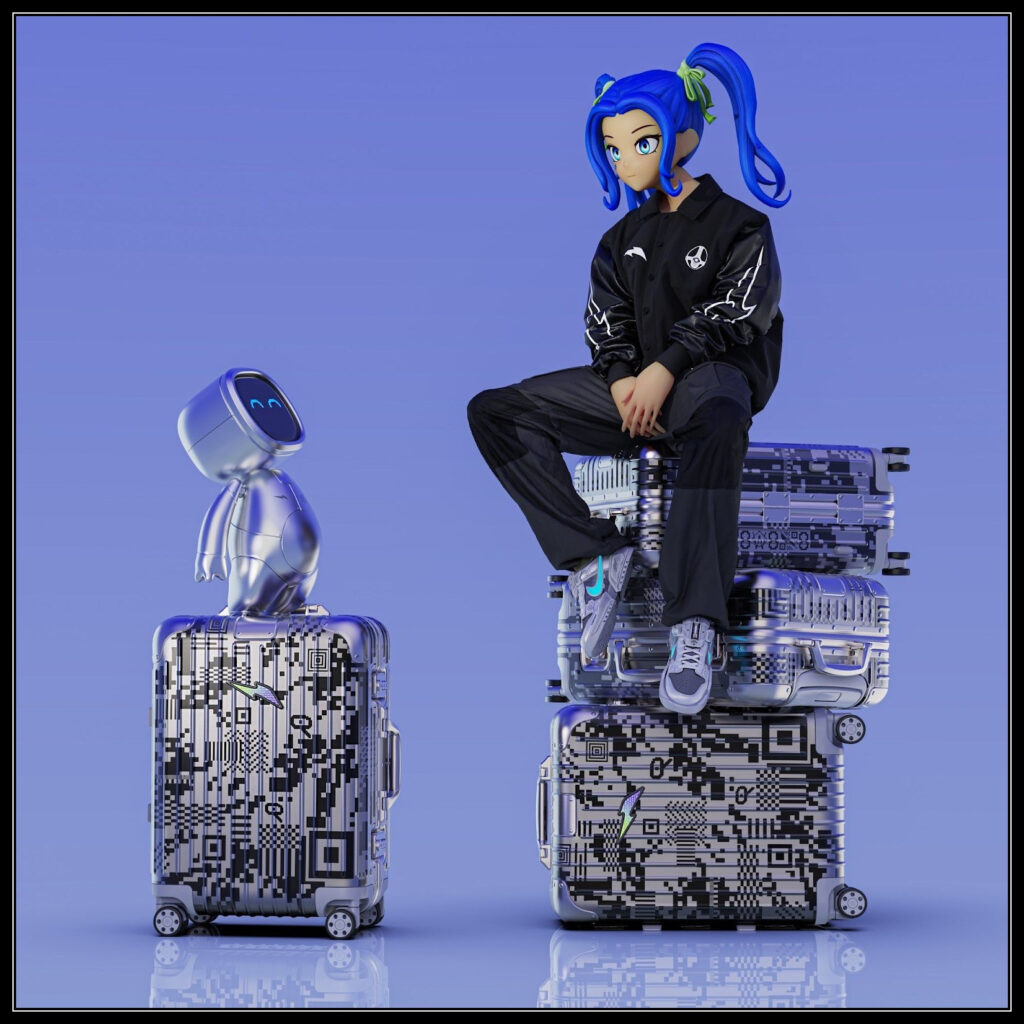Important Tips:
- Phygital NFTs bridge the physical and digital built using metadata and a distinct tokenID
- Nike’s CryptoKicks collection with RTFKT is a good example of these types of NFTs
- These collectibles will become popular in 2023 for bringing authenticity, enhancing in-person experiences, utilizing AR technology, and tokenization of assets.
In 2022, Phygital NFTs were popularized, mainly by fashion brands, to draw people into Web3. This year, this trend is predicted to go mainstream as many companies explore the possibility of combining their physical products with digital items, and also provide utility to consumers.
According to a CryptoPresales.com report, the value of NFT sales leaped by 10% YoY to $21.9 billion in 2022. The highest percentage of sales came from PFP collections. However, it appears that the market is now shifting towards phygital NFTs.
This is indicated by recent launches from fashion brands and other companies. This technology seems to be a new way to provide incentives to customers who purchase or engage with physical items.
This article is a detailed explanation of why Phygital NFTs may be the next trend in 2023:
What are Phygital NFTs?
For those who don’t know Phygital NFTs are a type of NFT in which physical items can be redeemed for non-fungible tokens through a QR code or NFC tag on the blockchain or vice versa. It is a blend of physical and digital that opens a wide range of possibilities for creators, brands, and companies to experiment their products with.
These collectibles are divided into two components
The digital component: where the asset is stored on the blockchain with a unique tokenID using non-fungible technology and smart contracts.
The physical component: which the owner can hold and store in person.
With the use of QR codes or NFC tags, users can redeem physical items for non-fungible tokens or vice versa, opening up new possibilities for creators, brands, and companies to experiment with their products.
Use case: Nike’s CryptoKick iRL
Nike’s acquired creator studio RTFKT brought the trend of phygital NFTs in with its metaverse shoes. The first collection was RTFKT x Nike Dunk Genesis CryptoKicks in which owners could dress virtual shoes to avatars in the metaverse and also own a pair in the real world.
Recently, CryptoKicks iRL was launched on December 9, 2022, where users minted the limited edition of 19,000 NFTs and got physical counterparts delivered by the creator studio through “forging.” These shoes sold out as soon as they were launched, accumulating
The sneakers are produced in four colors: “Blackout,” “Stone,” “Ice,” and “Space Matter”. It combines blockchain technology with “auto-lacing, enhanced lighting, haptic feedback, walk detection, and artificial intelligence algorithms” as mentioned on the website.
4 Reasons why Phygital NFTs are the new trend in 2023
When it comes to predicting whether these collectibles will be successful in 2023, Then, the answer would definitely be yes! Phygital NFTs are the perfect way to achieve mass adoption. Here are the possible reasons why these types of collectibles will succeed in the market this year:
Upgrade Real-world authenticity
Phygital NFTs combine the tangible benefits of physical products with the security of blockchain technology. With the ownership of these items recorded on the blockchain, it is nearly impossible to manipulate or forge any information. This provides peace of mind to buyers, who can trust that the products they purchase are authentic and real, with a full and verifiable transaction history.
For instance, a collector looking to purchase a rare artwork can easily verify its authenticity by viewing its information and transaction history stored on the blockchain. This allows them to see who owns it, ensuring that they are buying the original piece.
The combination of physical and digital elements in phygital NFTs provides a new level of confidence for collectors and investors alike.
Enhance in-person experiences
Phygital NFTs are revolutionizing the way we experience events by merging the physical and digital realms. This innovative concept allows events like conferences, concerts, and more to be sold as one-of-a-kind tokens stored on the blockchain forever.
With phygital NFTs, attendees receive the physical ticket and a corresponding NFT stored in their digital crypto wallet. This gives them an immersive experience.
Addition to AR technology
When it comes to bridging physical with virtual, Augmented Reality is most likely to adopt Phygital NFTs. Fashion brands and other companies have already embraced AR in their models. So, the addition of NFTs is the next step in their evolution.
For example, if a fashion brand is selling clothes, customers can simply try their products out using AR technology. With phygital NFTs, they can own the physical product along with the collectible.
Many experts are still experimenting in this sector. As more companies adopt blockchain technology and NFTs, the phygital trend is poised for widespread adoption in 2023 and beyond.
Tokenization of assets
Phygital NFTs can store information about the physical product and clearly define the right to ownership to the holder.
This technology is particularly useful for industries such as real estate, where land files and ownership records with ownership proofs are stored using smart contracts.
By purchasing through cryptocurrency or fiat currency, Phygital NFTs facilitate seamless transfers of ownership from the seller to the buyer with a more secure and streamlined experience. Land ownership becomes simpler than ever.
Conclusion
Following the trends, Prada dropped a Capsule collection featuring physical products with virtual parts, giving their loyal buyers a chance to explore Web3 in simple terms.
Experts believe that in the future, NFTs won’t stand out as they do now, instead, they will be integrated with the existing technologies, Phygital collectibles being the biggest practical example of this.
In 2023, these types of NFTs will definitely rise in popularity, especially in the retail and fashion industry for not only promotional purposes but also for the metaverse.
Q/A
Q1. Why are Phygital NFTs becoming popular in 2023?
A. Phygital NFTs offers a new level of value and experience to customers and NFT enthusiasts. The combination of physical and digital because buyers can own assets in both realms. These collectibles can evolve in the coming years as they offer a secure and transparent tracking of ownership and provenance.
Q2. How do Phygital NFTs enhance the experience of physical products for customers?
A. Phygital NFTs are stored digitally providing a unique experience to customers. Since blockchain can history, ownership, and authenticity of any product, it makes the physical product relevant in real life as well.
The proof of ownership in phygital NFTs has more utility for physical items.
Q3. What are some challenges of adopting Phygital NFTs in business?
A. Many challenges exist for businesses who wish to adopt phygital NFTs:
- Technical complexity: Blockchain and NFT technology can be complex and difficult to understand, constructing a barrier to entry for many businesses.
2. Lack of regulation: Limited regulations surrounding the use of phygital NFTs make it difficult for businesses to know how to properly implement and use them.
3. Security concerns: Phygital NFTs are decentralized, and therefore, can be vulnerable to hacking and other security threats.
Overall, businesses need to carefully weigh these challenges before deciding to adopt phygital NFTs, and work with experts in the field to ensure a successful implementation.
Q4. How the use of Phygital NFTs can impact the future of commerce?
A. Phygital NFTs can innovate the world of commerce by improving user experience with physical products. The technology has the potential to bring new revenue and marketing opportunities to the table.
Additionally, phygital NFTs can help to reduce risks and increase trust in transactions, as the blockchain ledger can verify the authenticity of a product easily.
Phygital NFTs were popularized, mainly by fashion brands, to draw people into Web3 and the metaverse.
Read more about Phygital NFTs and collectibles in a detailed blog here

